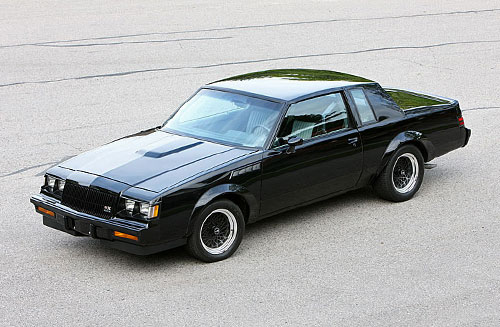Upcoming Buick GNX: Another
Storied Nameplate to be Sullied

It’s like what Pontiac did to the GTO, only worse.
Motor Authority reports that tuner SLP plans to revive Buick’s legendary GNX designation, applying it to a breathed-upon variant of the automaker’s current Regal GS. Mercifully, they’ve only planned to build around 500 of them, close to the painfully low number of the original that were produced.
To understand why this is such a travesty, consider a couple of things:
- The original GNX was the ultimate rip-snorting, ground-pounding, take-no-prisoners incarnation of the already-fearsome Grand National. It was, first and foremost, a muscle car. It may not have been V8-powered in the classic tradition, but its turbocharged V6 radiated torque in its own right. And it was RWD, sported a live rear axle, dripped with testosterone and was singularly intimidating to line up next to at a stoplight or drag strip.
- Back in ’04, Pontiac attempted to revive their legendary GTO badge by slapping it on a car called the Monaro, imported from their Australian subsidiary Holden. While the new GTO possessed good credentials on paper—a small-block V8 lifted from the outgoing Camaro and RWD—it utterly failed to catch on. Its timing was off by several years, for one; the new generation of muscle cars wouldn’t crop up until the emergence of the Dodge Challenger and especially the new Ford Mustang. But more significantly, although the mechanicals were on point, the sheetmetal was jellybean-like and inert, with absolutely none of the swagger befitting a proper muscle car.
And with the new GNX, history threatens to repeat itself as SLP prepares to water down yet another revered nameplate by affixing it to a very un-muscle-y sports sedan built on a FWD platform. A little nostalgia mining I can handle, but the new car must faithful if not to the original’s concept, at least to its general attitude. I really can’t see any possible way for SLP to re-cast the Regal GS in the mold of the ’80s GNX. It’s just not going to work.


